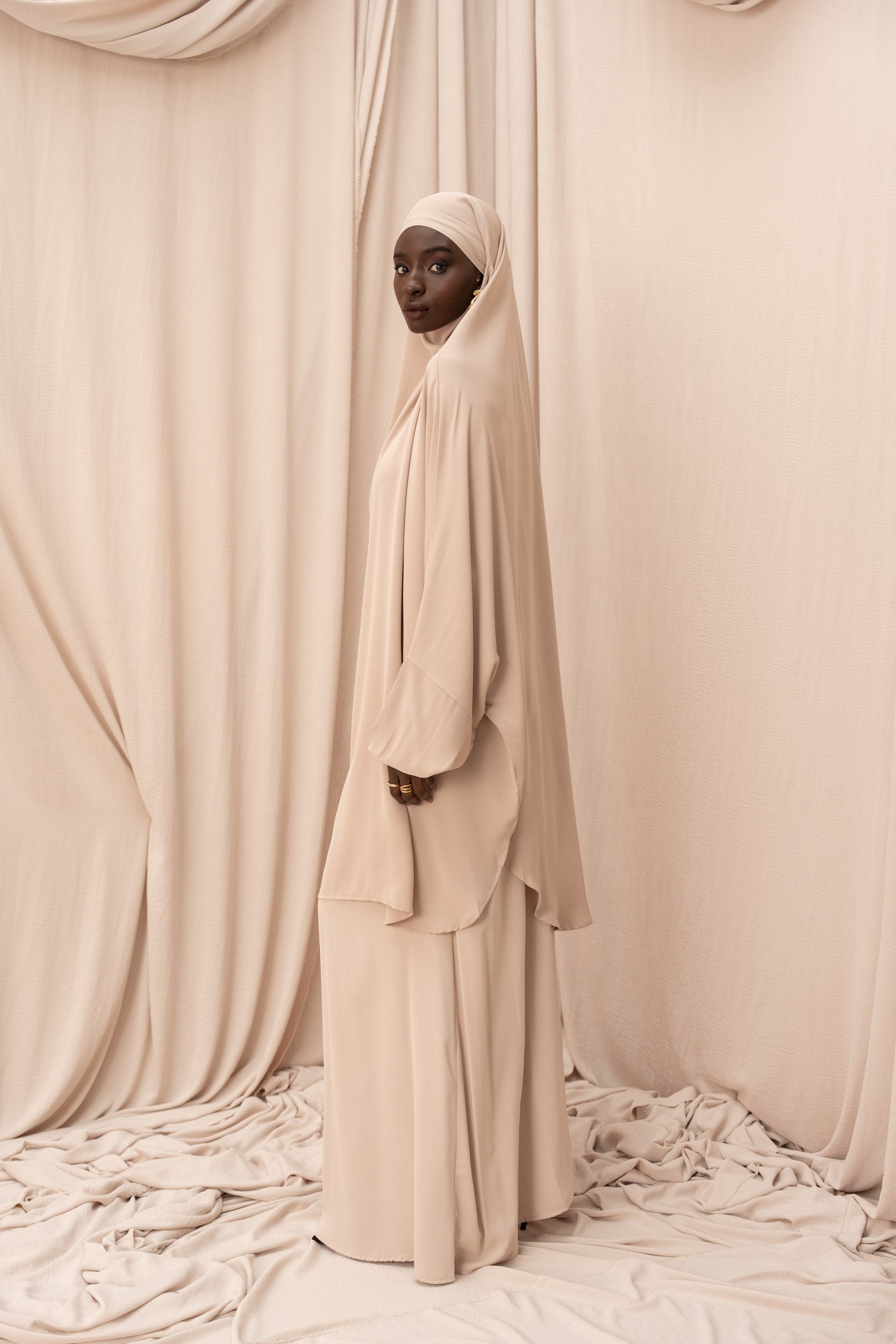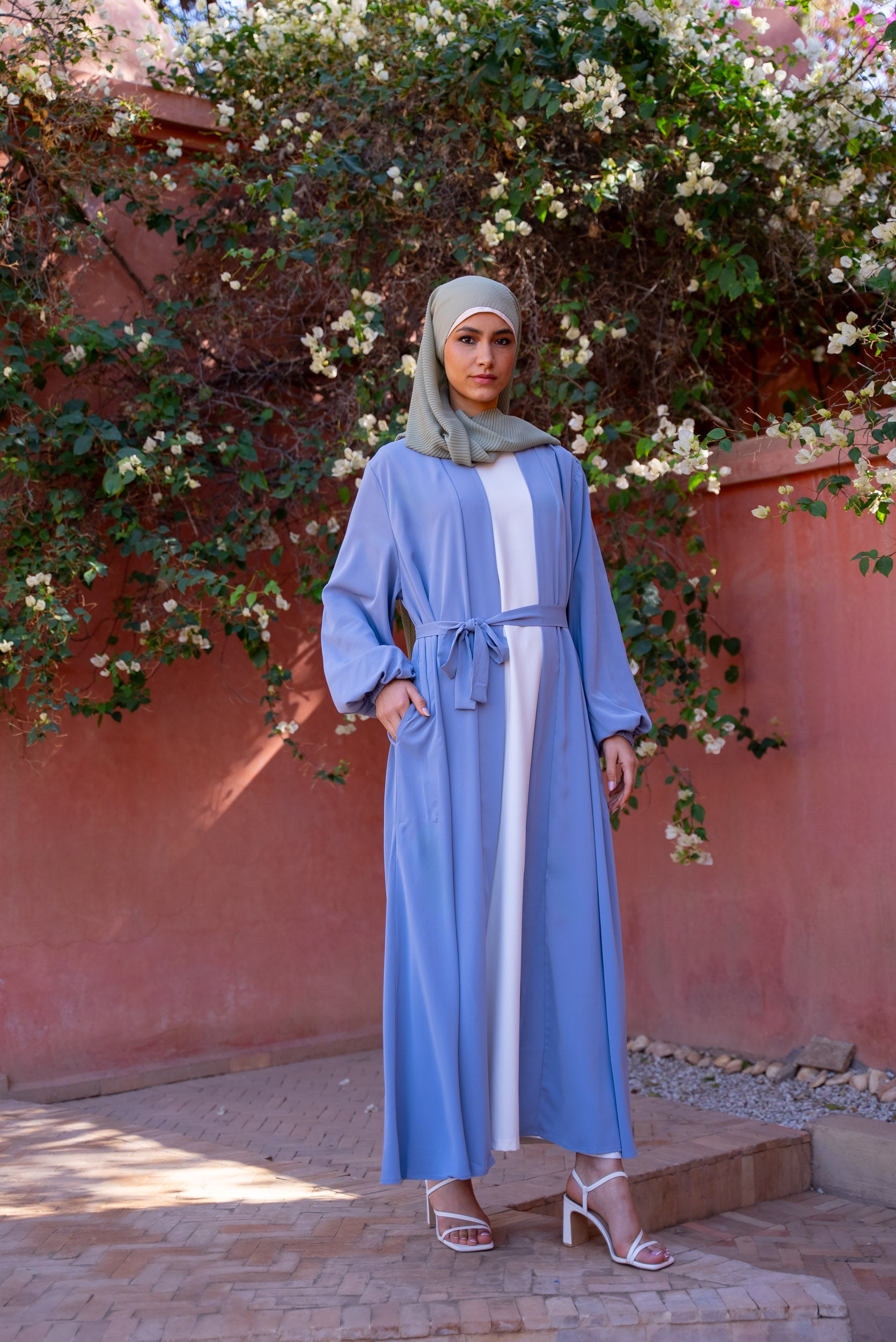UNDERSTAND THE DIFFERENCE BETWEEN HIJAB AND KHIMAR
Fashion and clothing practices in the Muslim world are rich and varied, often imbued with deep cultural and religious meanings.
Among these practices, two terms frequently recur:
the hijab and the khimar. Although often used interchangeably, they have important distinctions. Let's discover together the differences between these two clothing elements.

KHIMAR: A RELIGIOUS AND CULTURAL OBLIGATION
The khimar is a specific type of veil that not only covers the head and neck, but also extends down to the chest.
It is worn like a cape that wraps the shoulders and upper body.
The khimar offers more coverage than the hijab, sometimes reaching down to waist or hip level.
It is often worn for fuller coverage of the upper body, while leaving the face uncovered.
THE HIJAB: A VERSATILE ACCESSORY
Hijab, on the other hand, is a more general and universal term that refers to a piece of fabric worn around the head, neck or shoulders. Here is what distinguishes the hijab:
Multiple Use: Unlike the hijab, the headscarf is not exclusively associated with religion or modesty. It can be worn as a fashion accessory, to protect yourself from the cold, or simply for practical reasons.
Varied Styles: Scarves come in a multitude of shapes, sizes and materials. They can be square, rectangular, silk, cotton, etc. Patterns and colors vary greatly, reflecting fashion trends and personal preferences.


In summary, the hijab and the khimar are two pieces of clothing that, although sometimes similar in appearance, differ significantly in terms of meaning, usage and cultural context.
The khimar is deeply rooted in Islamic tradition and the notion of modesty, while the hijab is a versatile accessory adopted in many cultures for various reasons.
Understanding these distinctions allows us to better appreciate the richness and diversity of clothing practices around the world.






